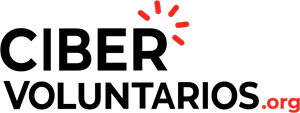
The role of emotions in the impact of misinformation
18/03/2024 Docheck
An analysis by DoCHECK! revealed that the influence of misinformation is particularly pronounced among young people when the topics directly affect their daily lives
The examination of focus groups with young participants in the DoCHECK! project unveiled that misinformation’s sway on youth is more apparent when it pertains directly to their everyday experiences. Among various insights into misinformation propagation, researchers determined that teenagers are more inclined to engage with content perceived as positive for themselves or their communities. Emotions, they found, play a crucial role in how individuals react to news. Content evoking strong emotions prompts further investigation, whereas emotionally detached topics are often disregarded.
As per the fieldwork, the clash between emotions and reasoning arises when individuals opt to believe what aligns with their existing beliefs or is more convenient for them. Consequently, credibility is bestowed upon sources with which individuals share an emotional connection. While young people acknowledge being more emotionally driven, adults tend to consciously rely on critical thinking and are wary of their emotions.
The willingness of participants to comprehend misinformation largely hinges on how it emotionally resonates with them, often leading to judgments of its veracity based on moral and ethical considerations rather than critical analysis. Furthermore, participants, including young people, educators, and parents, tended to accept or reject news based on its perceived significance and emotional impact, illustrating the intrinsic link between emotions and information processing.
Study participants also exhibited skepticism regarding the credibility of social media as a reliable information source, recognizing varying levels of trust across different platforms. While they value formal education in combating misinformation, they expressed a willingness to prioritize informal education through social networks. Specifically, they expressed interest in receiving critical thinking training and tools through content that resonates with them, such as video formats on platforms like TikTok and other social media platforms. They emphasized the importance of «shareable content» for fostering collective learning.
Across age groups, digital media and social networks were ubiquitous, albeit with varying platform preferences. Older individuals tended to rely on traditional media or Facebook for information, citing X (formerly Twitter) as a major European information source. Among adults, there was a widespread belief that social media offers less reliable information, favoring media subjected to rigorous internal processes or multiple verification stages before publication. Traditional sources such as schools and newspapers remain their preferred channels, where they perceive greater objectivity and control.
Conversely, younger participants, especially teenagers, placed more trust in family conversations and content from platforms like Instagram and TikTok, even with potentially harmful content.
In conclusion, the extensive use of social networks enables seemingly democratic expression of thoughts, yet it is also a major conduit for misinformation dissemination, contributing to increased fear and hate speech among recipients.
Overall, the study not only sheds light on the role of emotions in information consumption but also underscores the importance of disseminating reliable content and fostering critical thinking on social networks to cultivate a more informed and responsible digital society.











